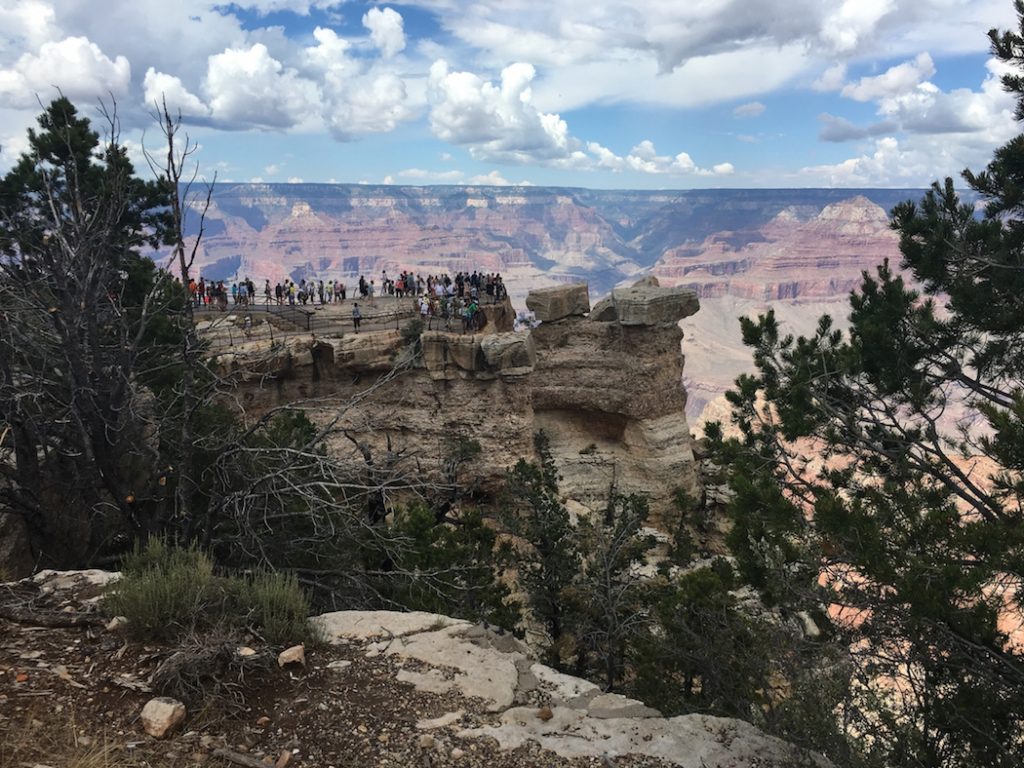
Located in Northern Arizona, the Grand Canyon National Park is one of the top 10 National Parks and a top destination in the U.S., Open year-round, the South Rim of the Grand Canyon attracts visitors from around the globe as each marvel at its view. Even seasoned travelers never tire of its view, it still amazes me with its scale and colors. Like most family vacations, planning is important and reservations are a must. Here are the top things to do at the Grand Canyon with Kids.
Grand Canyon National Park at a Glance
| Year Established: 1919 |
| Located: Northern Arizona |
| Size: over 1.2 million acres |
| Top Features: Mather Point, Bright Angel Trail and the Historic Grand Canyon Village |
Top Things to Do at the Grand Canyon with Kids
- Stop by the Grand Canyon Visitors Center
- Grab a Junior Ranger Booklet for Kids
- Watch the Grand Canyon movie at the Visitor Center
- Walk along the Rim Trail
- Rent bikes to explore
- See a sunset or sunrise at Yaki or Mather Point
- Tour the Historic Grand Canyon Village
- Walk through El Tovar Hotel
- Shop for traditional crafts at the Hopi House
- Walk through Kolb Studio
- Look over the Grand Canyon edges at the Lookout Studio
- Find the Bright Angel Trailhead, it heads to the bottom of the canyon
- Take a Short Mule Ride
- Visit Desert View’s Watchtower
- Ride the Shuttlebus to Hermits Rest
First Time Grand Canyon Visitors
For visitors visiting the Grand Canyon for the first time, it is busy from early spring through fall. For the most enjoyable visit, arrive at the South Rim entrance gate as early in the day as possible. To expedite the process, visitors can get their 7-day entrance pass at the Visitor Center, located in Tusayan. It also offers a Grand Canyon IMAX film.
After entering the park, visitors will need to park in one of the four parking lots near the Visitor Center. Due to limited parking along the south Rim, visitors should plan on using the Free Grand Canyon Shuttle System. With four color-coded routes, visitors can see all the major sites. Just pack a bag with the essentials, like refillable water bottles, sunscreen and a hat.
Located steps from the main parking area, the Main Visitor Center is a great first stop for information. A short walk away, the awe-inspiring Mather Point is a must-see while on the South Rim of the Grand Canyon.
Top Things to Do Around the Grand Canyon

The Grand Canyon Visitors Center
Most visitors will park near the Grand Canyon Visitors Center. Head inside and walk around, then watch the introductory movie. If the kids are interested, grab Junior Ranger booklets. Take a moment to look over the booklet to see what’s required to earn a patch.
Grand Canyon Conservancy’s Park Store sells books and gifts covering the Grand Canyon. It is located across from the Grand Canyon Visitor Center. Open daily from 9 a.m. to 6 p.m.
After exploring the Grand Canyon Visitor Center area, walk outside and head to the edge of the Grand Canyon. This is where to pick up the Rim Trail to walk to Mather Point, both must-dos.
If your kids want to see the Grand Canyon on a bike, you can rent bikes next to the Visitor Center. All bike sizes and helmets are available. If you packed a picnic, you can find several picnic tables throughout the Mather Point area.
Surprisingly, Grand Canyon National Park offers amazing sunsets or sunrises for early risers. The best spot to witness a symphony of nature is Yaki or Mather Point. I’ve seen visitors moved to tears at the beauty of this experience.
If time allows, tour the Historic Grand Canyon Village. You can also save time by taking the shuttle bus or walking along the Rim Trail.
It is located at 20 South Entrance Rd. The visitor center is open daily and offers seasonal hours from 10 a.m. to 4 p.m., with longer hours during the busy season.
Popular Stops on the South Rim
Yavapai Geology Museum
Built in 1928, the canyon’s geology and formation are explained. Visitors can also look out of the large windows, and it’s especially popular at sunset.
Located along the rim between the visitor center and Grand Canyon Village. Open from 9 a.m. to 5 p.m. with seasonal longer hours.
Las Vegas National Park Road Trip Itinerary
Historic Grand Canyon Village
As the original visitor area along the South Rim of the Grand Canyon, take a walking tour of the Historic Grand Canyon Village.
Verkamp Visitor Center
Built in 1906 by the Verkamp family, it was a kurio shop for decades. Now it’s a smaller visitor center located in the historic village.
Located in the Grand Canyon Village. Open daily from 9 a.m. to 5 p.m. with seasonal longer hours.
Grand Canyon Depot
Walk by the train depot to see how visitors visited the Grand Canyon 100 years ago and still do. It’s made of logs and is one of three remaining log depots.
The Grand Canyon Railroad is in the station most days from noon to 3 p.m. The Grand Canyon Railroad offers daily departures from Williams, Arizona, along Interstate 40.
It is located in the Grand Canyon Village, and it’s a separate stop on the Blue Village shuttle bus.
El Tovar Hotel
See the rustic elegance of the historic landmark hotel. If the kids are up for it, take a walk through the lobby or sit in the rocking chairs on the front porch.
Hopi House
Built in 1905, the building resembles a traditional Hopi structure. Designed by Mary Colter, find traditional arts-and-crafts from the Hopi People inside.
Located in the Grand Canyon Village. Open daily from 9 a.m. to 5 p.m.
Kolb Studio
Built in 1905, this was a studio for the Kolb brothers, turn-of-the-century photographers.
Located in the Grand Canyon Village. Open daily from 9 a.m. to 5 p.m. with seasonal longer hours.
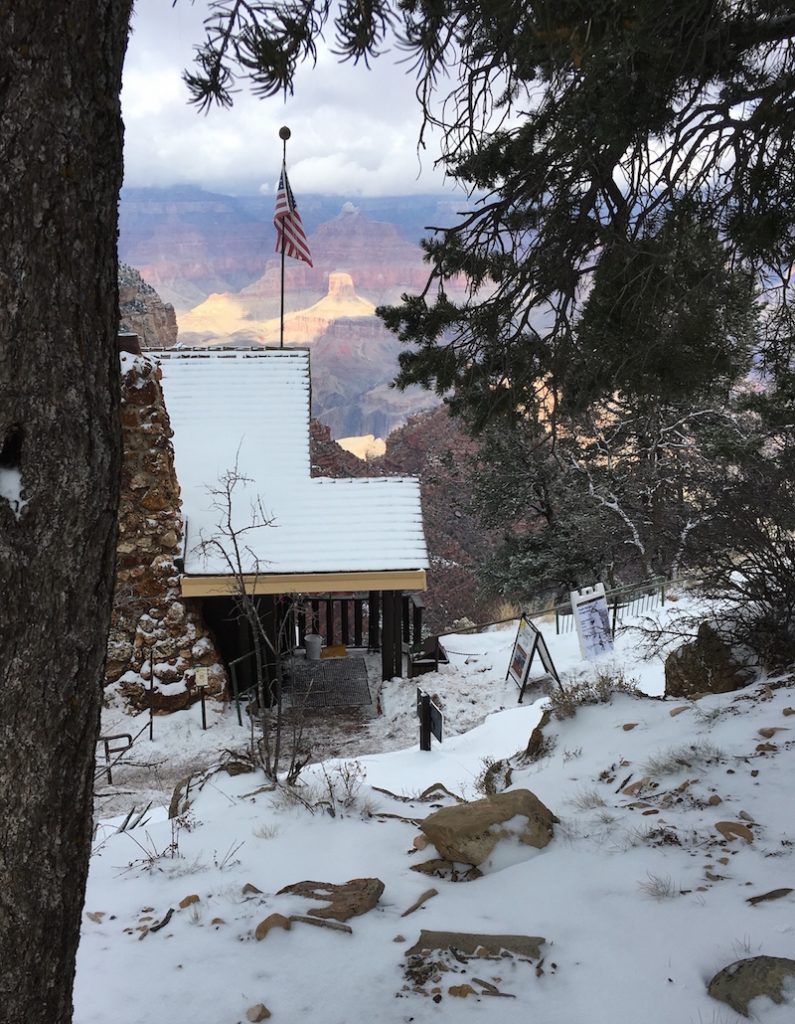
Lookout Studio
Positioned along the rim, the Lookout Studio was built in 1914 of rock. Mary Colter designed it to blend in with the environment. Find an amazing view along with rocks and fossils to buy as souvenirs.
Located in the Grand Canyon Village. Open daily from 9 a.m. to 5 p.m.
Bright Angel Lodge
Find the brightly painted details in the hotel built by Mary Colter as you walk through the lobby. Inside find the Geologic Fireplace with the layers of rock displayed each as found along the walls of the Grand Canyon. Visitors will find lots of dining inside the Bright Angel Lodge.
Bright Angel Trail
Along the rim, visitors will find the Bright Angel Trailhead, just past the Kolb Studio. It’s a well-maintained trail that the famous mule train uses to descend to the bottom of the Grand Canyon and Phantom Ranch.
Though reaching the bottom is an all-day hike, prepared visitors can get a taste of canyon hiking since the first tunnel along the trail takes about 20 minutes to reach.
Shrine of the Ages
This is a multi-purpose building used for ranger programs and religious ceremonies.
It is located in the Grand Canyon Village and is a separate stop on the Blue Village shuttle bus.
Top Things to Do on the North Rim of the Grand Canyon
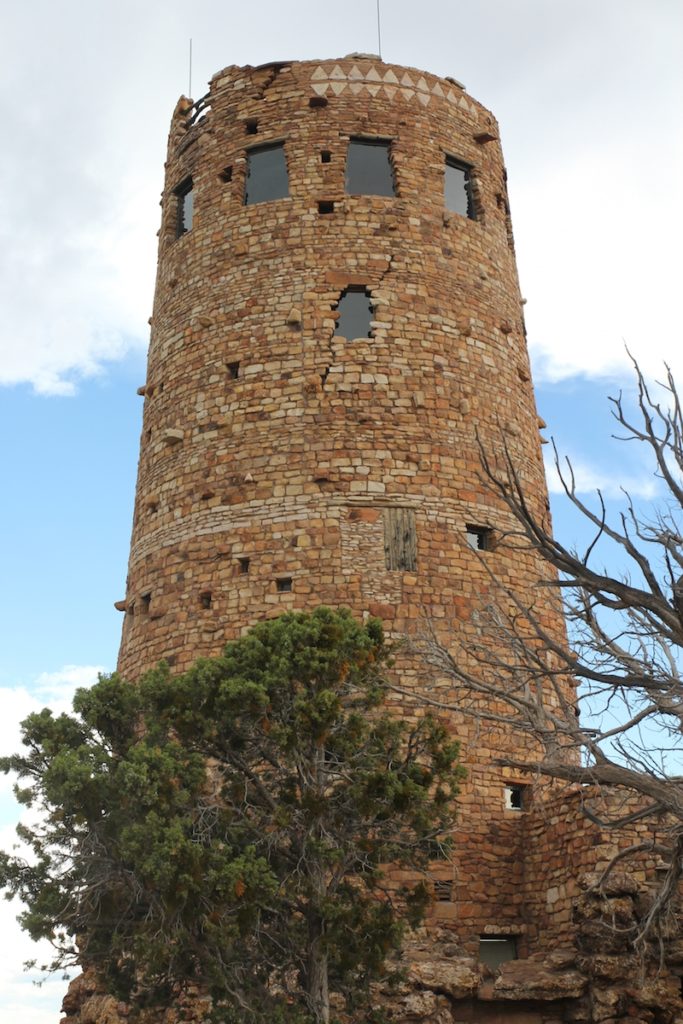
Other Places to Explore on the South Rim
Desert View Area
Take a scenic drive 25 miles (41 km) east of the Grand Canyon Village. Along the route, you will pass Pipe Creek Vista, the South Kaibab Trailhead, Yaki Point, Grandview Point, Moran Point, Lipan Point, Navajo Point, and Desert View. The South Kaibab Trailhead is the endpoint for the Rim Trail and Greenway Trail, which run along the rim.
In the Desert View area, find Mary Colter’s Desert View Watchtower, built in 1932. Designed using traditional southwest architecture, the tower is 70 feet (21m) tall and offers a 360-degree view from the top. Many consider it her Grand Canyon masterpiece. Colter framed each view to enjoy the dramatic landscape, like a painting. After emerging from the tower, take a moment to absorb the surroundings, like the desert perfume of pinyon pine and sage after an afternoon rain.
The Desert View area offers a ranger station, general store and deli, bookstore and gas station.
The Desert View Watchtower is open daily from 8 a.m. to 6 p.m.
The Tusayan Ruins and Museum are also located in this area. Here, you can explore the remains of an ancient Puebloan village and find a kiva with interpretive signs.
Hermits Rest
Seven miles (11 km) west of the Grand Canyon Village, another Mary Colter building and nine viewpoints are located. Stop at Trailview Overlook, Maricopa Point, Powell Point, Hopi Point, Mojave Point, The Abyss, Monument Creek Overlook, and Pima Point.
Hermits Rest was built in 1914 to resemble a miners’ cabin. Part of the structure is buried in the earth, and the massive fireplace is made of local stone.
Hermits Rest is the end point of the Rim Trail and Greenway Trail that runs along the rim. The Hermits Trailhead into the canyon is nearby.
From March until the end of November, reach the area with a red Hermits Rest shuttle bus. It’s closed to private vehicles. During the winter, private vehicles can drive along the scenic route.
Top Things to Do in Flagstaff
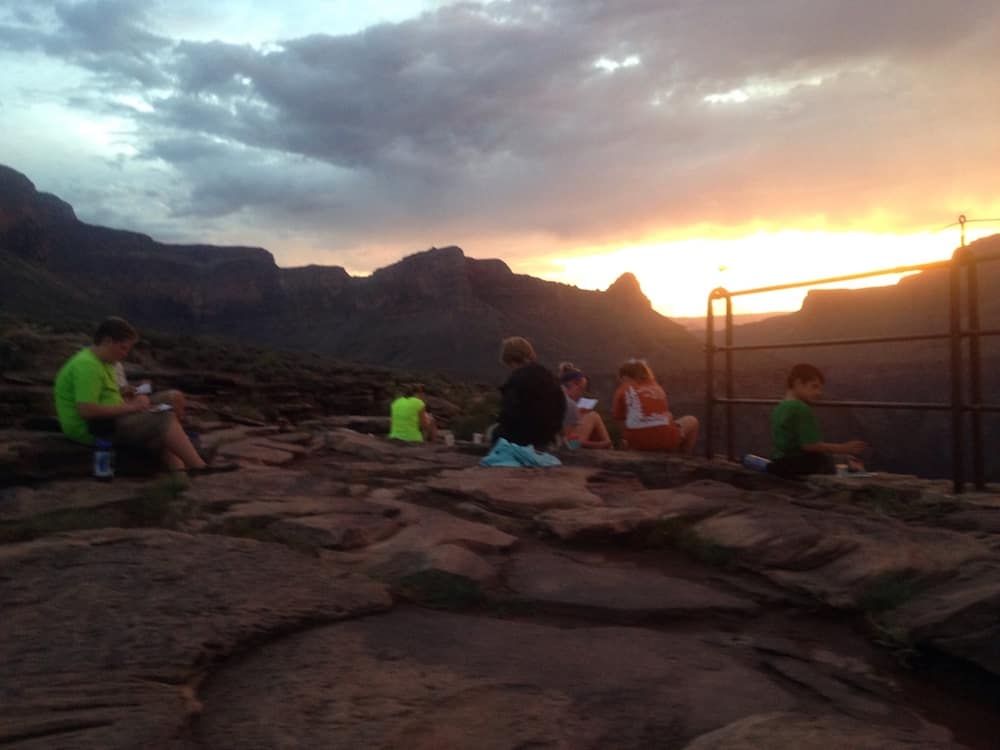
Top Day Hikes on the South Rim
Rim Trail—Easy and level 13-mile (20-km) one-way paved trail with frequent shuttle stops along its route. Runs from Hermits Rest to the South Kaibab Trailhead.
Trail of Time—Part of the Rim Trail, the 2.83-mile (4.56 km) one-way paved trail runs from the Yavapai Geology Museum to the Grand Canyon Village. The interpretive signs explain the passage of time in the Grand Canyon’s rock layers.
Bright Angel Trail—A difficult 18-mile (28 km) roundtrip hiking path into the canyon. Find rest houses with water along the trail, though the the water supply is cut off in winter.
Tip: Wear appropriate clothes and shoes then pack water and snacks no matter how the length of the hike.
River Trips on the Colorado River
From one-day calm water float trips to 18 days of red water adventure, floating the Colorado River through the Grand Canyon is a bucket list item. Find authorized concessionaires that offer river trips through the Grand Canyon National Park.
Guide for Zion National Park in Utah
What to do at the Grand Canyon with Kids

The Junior Ranger Program is the go-to program for families to learn more about this UNESCO World Heritage Site. It’s free and takes about two hours to complete. My kids love the patches that the Park Rangers present them after completing their booklet.
The Grand Canyon Junior Ranger Program hands out booklets specially designed for each age group. Families are required to attend a Ranger Program and find a program list at the visitors centers to earn the Junior Ranger badge.
Raven Award–kids aged 4 to 7, though I’ve been helping my youngest since he was 3
Coyote Award–kids 8 to 10
Scorpion Award–kids 11 and older
For night owls, the Grand Canyon offers the Night Explorer Junior Ranger Patch. Kids attend a special Night Skies Ranger Program and complete the booklet that’s available at the visitor centers.
If you plan to visit the bottom of the canyon, you will be rewarded with a special Junior Ranger badge at Phantom Ranch. The Phantom Rattler Junior Ranger Patch has its own booklet and activities.
Utah’s Bryce Canyon National Park Guide
Wildlife on the South Rim
Find animals during your trip to the Grand Canyon.
- Mule Deer
- California Condor
- Desert big horn sheep
- Coyote
- Elk
Animals shy away from people and are less active during the middle of the day.
Mule Rides at Grand Canyon
Since the late 1800s, mules have climbed in and out of the Grand Canyon carrying cargo and passengers. A mule trip to the bottom of the Grand Canyon is a once-in-a-lifetime adventure for many travelers.
The overnight trip to Phantom Ranch departs from the Bright Angel Corral and switchbacks down the Bright Angel Trail. Riders enjoy a steak dinner at Phantom Ranch and can swim in Bright Angel Creek. Following breakfast, riders climb out of the canyon via the South Kaibab Trail.
Mule trips require advance planning, and reservations are rewarded by lottery for a year in advance. Prices start at $1,100 per person. Mule trips are paused for select months in 2024 and 2025 for ongoing trail rehabilitation.
If you have less timee, you can take a two-hour ride near the canyon rim on a mule. The mule trip departs at 10 a.m., and there are two departures from March through October. Prices start from $170 per person, and reservations are required.
Riders must be at least 9 years old, four feet, nine inches tall (1.44 m), and weigh less than 225 pounds (102 kg) or 200 pounds (90 kg) for the Phantom Ranch trip. South Rim mule rides are offered year-round, regardless of weather, so dress accordingly.
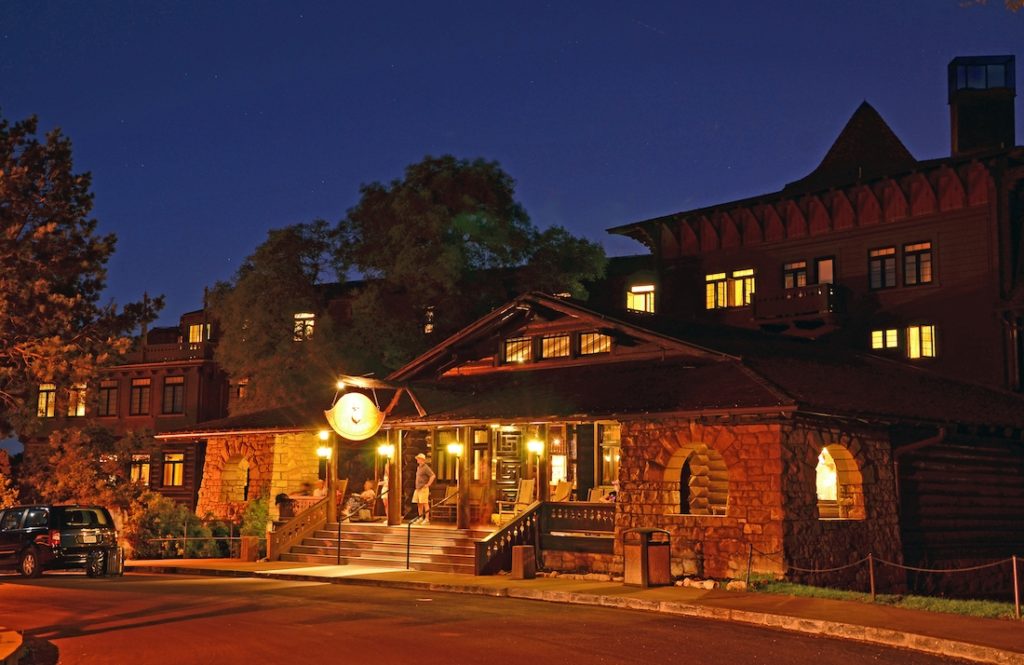
The History of the Grand Canyon National Park
The first human artifacts found in Grand Canyon National Park date back 12,000 years. Though the Colorado River started carving the Grand Canyon nearly 2 billion years ago, it measures 18 miles wide, one mile deep, and 277 river miles long.
First protected in 1893, the Grand Canyon became a national park in 1919. In 1979 it was designated a UNESCO World Heritage Site.
The canyon is surrounded by the Grand Canyon National Park, Kaibab National Forest, Grand Canyon-Parashant National Monument, Hualapai Indian Reservation, Havasupai Indian Reservation and the Najavo Nation.
People of the Grand Canyon
Since the Grand Canyon crosses half of northern Arizona, many people call it home and have for thousands of years. The Ancestral Puebloans were the first people to live in the area.
The Hualapai People live on the southern side of the Grand Canyon. For 800 years, the Havasupai People have lived on the southern portion of the canyon next to the Hualapai. The Hopi and Navajo People live east of the canyon. The Grand Canyon is a sacred place to all.
The Spanish conquistador García Lopez de Cárdenas saw the Grand Canyon in 1540. Mormon missionaries helped establish a ferry across the Colorado River in the 1850s at the area later named Lees Ferry.
In 1869 John Wesley Powell set out to explore the Colorado River and the Grand Canyon from Wyoming. The Atkinson, Topeka and Santa Fe Railroad arrived at the South Rim in 1901, spurring tourism.
The Fred Harvey Company and Mary Colter
In 1876, Fred Harvey opened restaurants and hotels catering to train passengers in Kansas for the Atkinson, Topeka and Santa Fe Railroad. Soon the Fred Harvey Company became a standard in hospitality while traveling on the train in the Southwest.
The Fred Harvey Company and the Santa Fe Railroad built several buildings along the South Rim of the Grand Canyon since it was a major destination for the train. Mary Colter, an architect for Fred Harvey from 1904 to 1949, designed many of the notable buildings, like the Hopi House, and the Bright Angel Lodge, along with Hermits Rest and Desert Tower.
Using design elements from the desert landscape, Colter wanted her buildings to look like they grew from their surroundings. This was a central element of the National Park Service at the time and is known as National Park Rustic.
The CCC
A group of young men arrived at the Grand Canyon in 1933. Part of President Roosevelt’s Works Progress Program, the Civilian Conservation Corps worked on conservation projects across the U.S.
During their tenure, the men of the CCC constructed the stone wall along the edge of the canyon in the Grand Canyon Village National Historic Landmark District. They improved the Bright Angel trail and built resthouses along the route.
The CCC developed camps at the North Rim and Desert View, constructed several trails, and ran the trans-canyon telephone line connecting the north and south sides of the canyon.
Petrified Forest National Park in Arizona
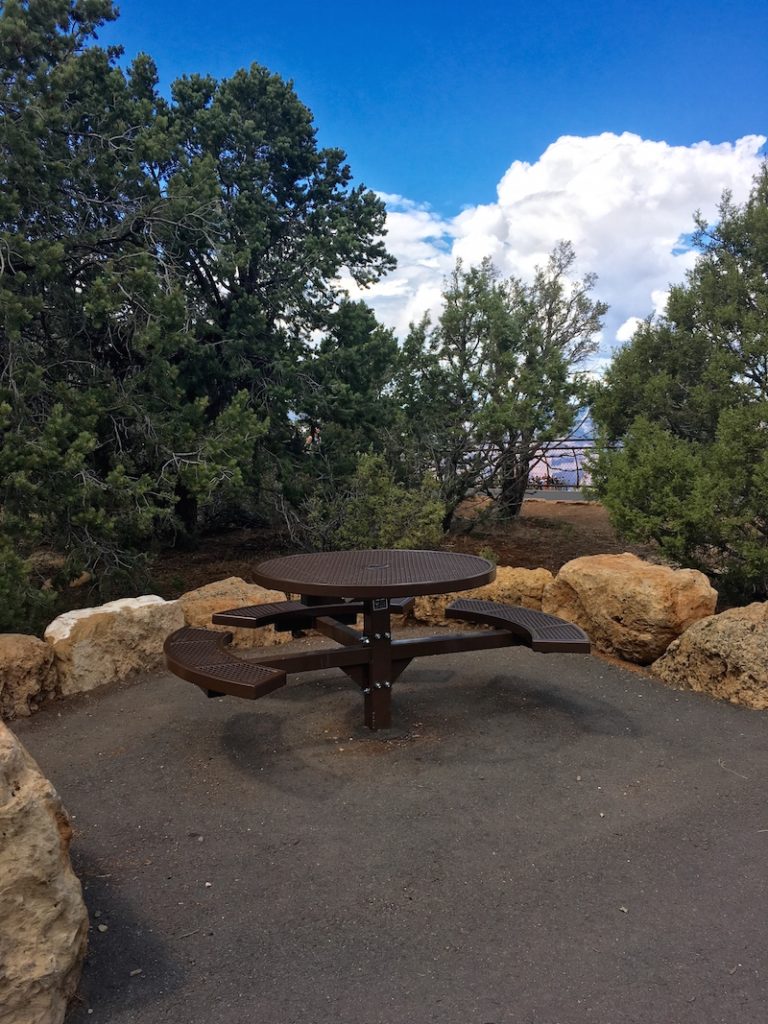
Where to Eat at the Grand Canyon
Grand Canyon Visitor Center–Find grab-and-go items along with a coffee bar.
Grand Canyon Market Plaza–Find a deli along with a well-stocked grocery store.
Camper Services Area at Mather Campground–Find grab-n-go items along with coffee and ice cream.
Yavapai Lodge–Find the Yavapai Lodge Coffee Shop, Yavapai Lodge Restaurant and Yavapai Lodge Tavern.
El Tovar–Find the El Tovar Dining Room and El Tovar Lounge.
Bright Angel Lodge–Find the Arizona Room, the Fred Harvey Burger, Bright Angel Fountain, Bright Angel Bar
Maswik Lodge–Find the Mastik Lodge and Pizza Pub.
Desert View–Find a Desert View General Store and Deli.
Hermits Rest–Find a snack bar.
Picnicking at the Grand Canyon
Find picnic tables in several locations across the South Rim.
- Grand Canyon Visitor Center
- Market Plaza
- Historic Village
- Hermits Rest
- Desert View
- Desert View Drive Pullouts
Where to Stay at the Grand Canyon
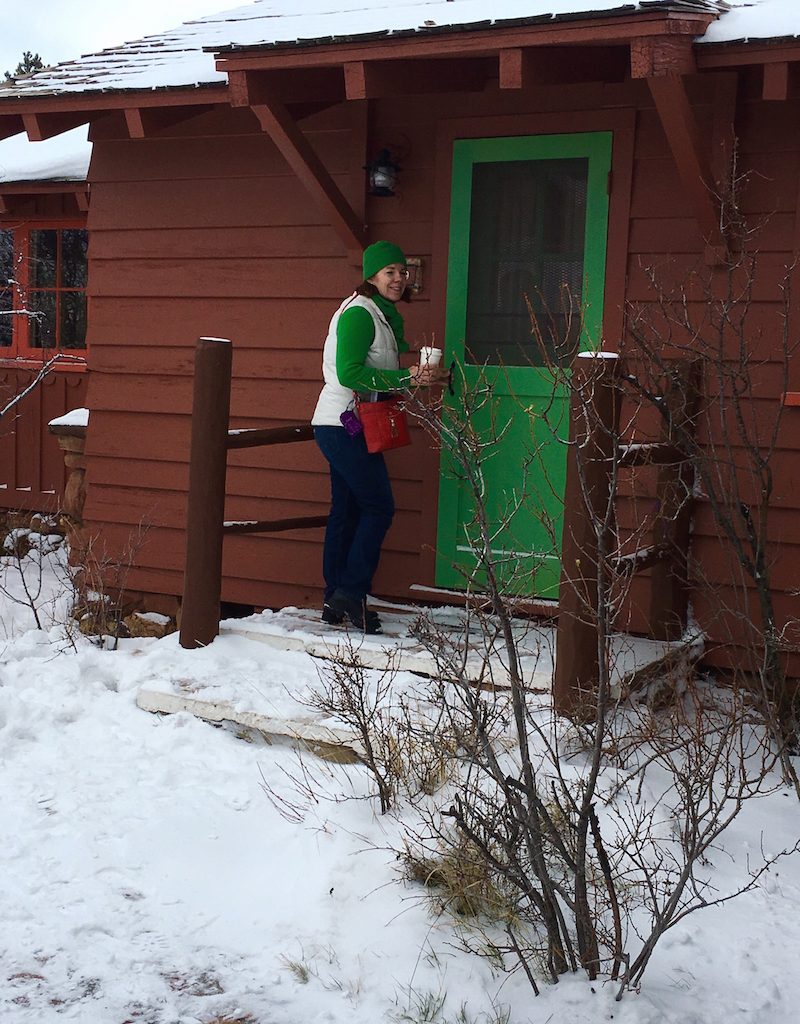
El Tovar Hotel
Opened in 1905, El Tovar Hotel was designed by Charles Whittlesey for the Atkinson, Topeka and Santa Fe Railroad. It is built of local limestone and Oregon pine, and it features log walls, limestone arches, and Arts and Crafts furniture. It’s a National Historic Landmark.
As the premier property on the South Rim, it features a dining room along with a lounge and in-room dining. Find standard rooms to suites, and reservations are required.
Bright Angel Lodge
Opened in 1935, the Bright Angel Lodge was designed by Mary Colter, an architect for the Fred Harvey Company. It features log construction, an abode and local limestone. Inside, find the geological fireplace along with the hand-carved and painted doors.
Surrounding the main lodge, find log cabins, some with rim views. It’s near the Bright Angel Trail and part of the Grand Canyon Village National Historic Landmark District. Find historic lodge rooms and semi-detached cabins, reservations required.
Bryce Canyon National Park Guide
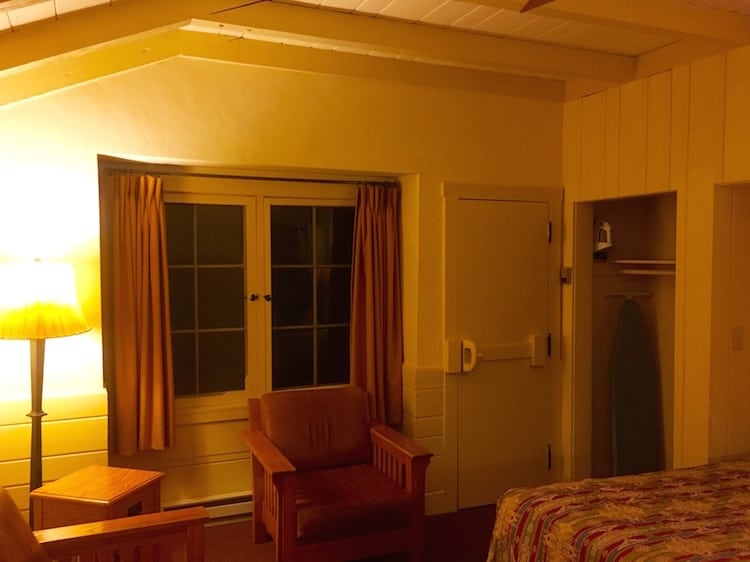
Kachina Lodge and Thunderbird Lodge
Both designed in the late 1960s, the Kachina Lodge and Thunderbird Lodge offer rim views and partial rim views along with modern conveniences, like TVs and full baths. A good choice for families wanting a standard hotel room with a convenient location in the historic landmark district.
Find standard rooms with king beds or two queen beds.
Maswik Lodge
Another lodging option with modern rooms that were renovated recently.
Yavapai Lodge
Located near the Market Plaza area, the Yavapai Lodge is the largest lodging property on the South Rim. It offers a cafeteria, and some rooms feature air conditioning, which is not standard at NPS properties.
Find rooms with king beds, two queen beds and accessible and pet-friendly rooms.
Phantom Ranch
Designed by Mary Colter and built in 1922, the lodging at the bottom of the canyon used rock found on-site along with Oregon pine. The mule train brought the building materials to the site, and the area is still serviced by a mule train.
It takes about five hours to reach Phantom Ranch on the mule train or by hiking a canyon trail. Lodging and meals are provided, and rooms are awarded on a lottery system 14 months in advance. With a few days’ notice, meals can be arranged in advance for those camping.
Top National Park Lodges
Camping at Grand Canyon’s South Rim
Mather Campground
- Year-round
- Reservations Accepted except in Winter
- 258 sites with a 30-foot RV limit, 6 group sites
- Potable water and flush toilets
- Camper services building with hot showers and laundromat
- Dump station nearby
Trailer Village RV Park
- Year-round
- Reservations recommended
- Pull-through sites with full hook-ups with a vehicle limit of 50 feet.
- Potable water and flush toilets
- Dump station nearby
Desert View Campground
- Open from mid-April to mid-October
- No reservations accepted
- 50 sites with a 30-foot RV limit, no hook-ups.
- Potable water and flush toilets
Where to get Necessities
If you are staying more than a day or two at the Grand Canyon, chances are you forgot something. If you’re traveling with kids, something needs to be washed.
You don’t have to leave the national park, head to the Market Plaza, near Mather Campground. Find a well-stocked general store (groceries), ATM, post office, laundromat, pay showers and the Grand Canyon clinic.
Where’s the Grand Canyon
The Grand Canyon is divided by the North Rim (open seasonally) and the South Rim. I’ve visited both and recommend the South Rim for your first visit.
The Grand Canyon South Rim is located 59 miles north of Williams, Arizona, on Highway 64. The South Entrance is the most popular gateway taking visitors through Tusayan, a tourist town full of food, lodging and gas.
For the East Entrance, drive north from Flagstaff on U.S. Route 89 to Highway 64. This route is a great alternative to the South Entrance and provides a scenic drive along the rim from Desert View Watchtower to the Grand Canyon Village.
Make it a National Park Vacation. Grand Canyon National Park is 250 miles from Zion National Park, 280 miles from Bryce Canyon National Park and 200 miles from Petrified Forest National Park.
Williams (WMA) is an Amtrak destination and a stop for a regional bus service. Eighty miles away, Flagstaff, Arizona (FLG) is the closest airport with commercial flights.
For a unique experience, visitors can take a historic train into the park with the Grand Canyon Railroad. The GCRR offers several packages and daily departures from Williams. Arrive at the historic Grand Canyon Train Depot, located across from the El Tovar Hotel. The Depot is a log-building train station, the only one in the U.S. still in operation.
Gateways Towns on Grand Canyon’s South Rim
Tusayan—Located right outside the south entrance to the Grand Canyon National Park. This town is one mile long, though it offers the most convenient lodging and dining outside of the Grand Canyon Village. Also, Tusayan is a base for commercial tours and flightseeing operations.
Williams—Located along Interstate 40, Williams is a larger community than Tusayan and it’s 53 miles south of the Grand Canyon South Rim Entrance. Additionally it’s the departure point for the Grand Canyon Railways.
Flagstaff—Located southeast of the Grand Canyon National Park, this mountain destination offers easy access to the Grand Canyon along with the Glen Canyon National Recreation Area and southern Utah. It’s 72 miles from the South Rim entrance.
Las Vegas—For air travelers, Las Vegas offers the most flights along with The Strip. It’s the closest city to the Grand Canyon SkyWalk on the western side of the Grand Canyon (not at the South Rim).
Weather at Grand Canyon’s South Rim
Winter: Highs 40sF (8 to 9C), Lows mid 20sF (-4 to -2C)
Spring: Highs mid 50s to mid 70sF (15 to 25C), Lows low 30 to mid 40sF (0 to 8C)
Summer: Highs mid 80sF (26 to 29C), Lows 50sF (11 to 15C)
Fall—Highs low 50s to mid 70sF, Lows mid-40s to upper 20s (6 to -3C)
Average Rain and Snow averages about 1 inch per month.
Getting Around Grand Canyon
While exploring the Grand Canyon, consider using its free shuttle. It’s color-coded and easy to use. Parking is limited at popular points on the South Rim, and find the most parking at the Grand Canyon Visitor Center.
Spend as little or as much time as you want. The South Rim of the Grand Canyon is open 365 days a year, 24 hours a day. A 7-day private vehicle pass is $35 and you can purchase a digital pass at recreation.gov.
Las Vegas offers the largest international airport (LAS) in the southwest. Find dining, lodging and entertainment options on The Strip along with the surrounding city. Las Vegas is about 274 miles from the Grand Canyon’s South Entrance.
Know Before You Go
- Reservations for lodging and tours should be made as soon as possible. Lodging reservations can be made 13 months in advance.
- Since the cabins are cool in the summer they don’t feature air conditioning for summer guests.
- The North Rim of the Grand Canyon is closed from October 15 to May 15 due to seasonal road closures.
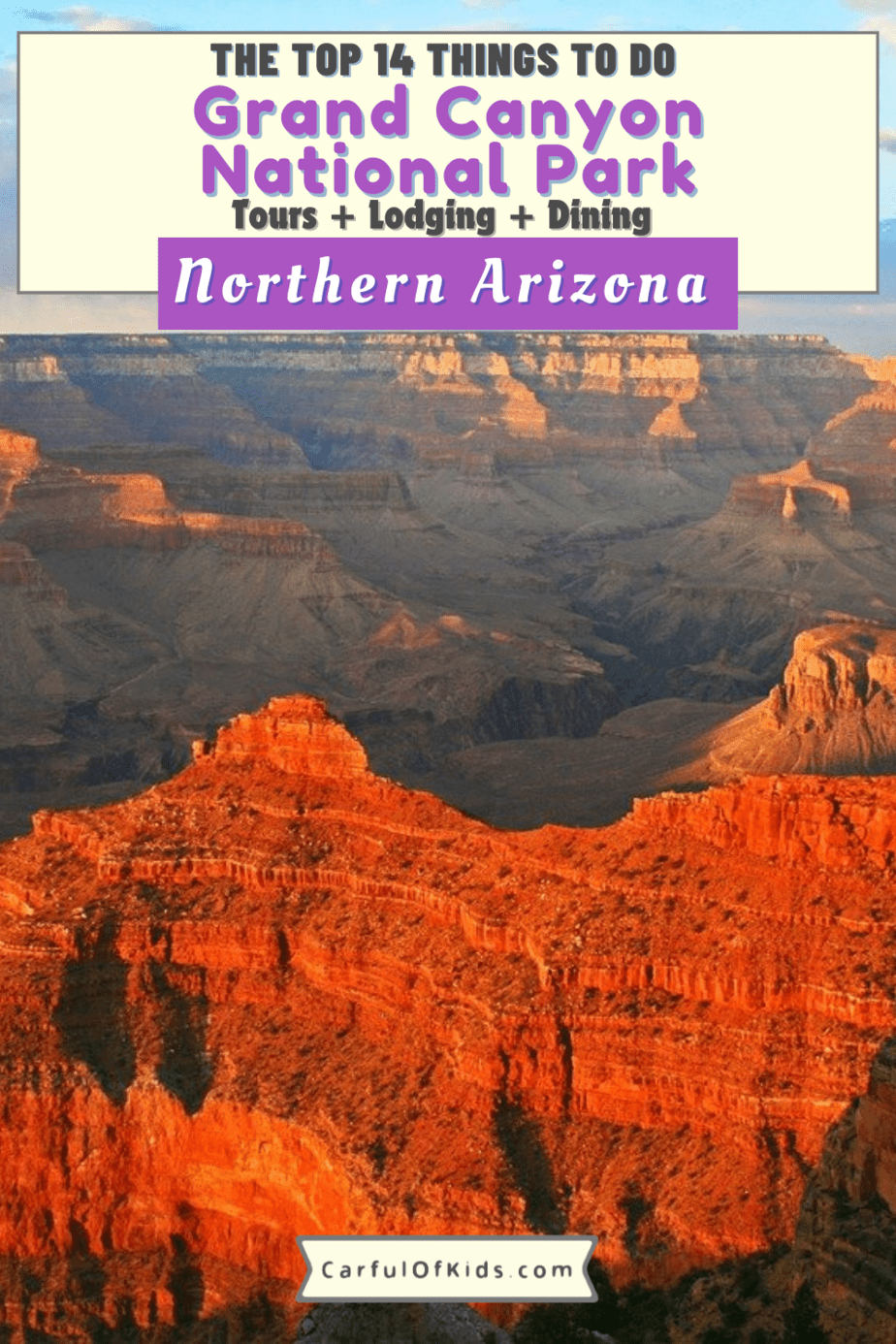

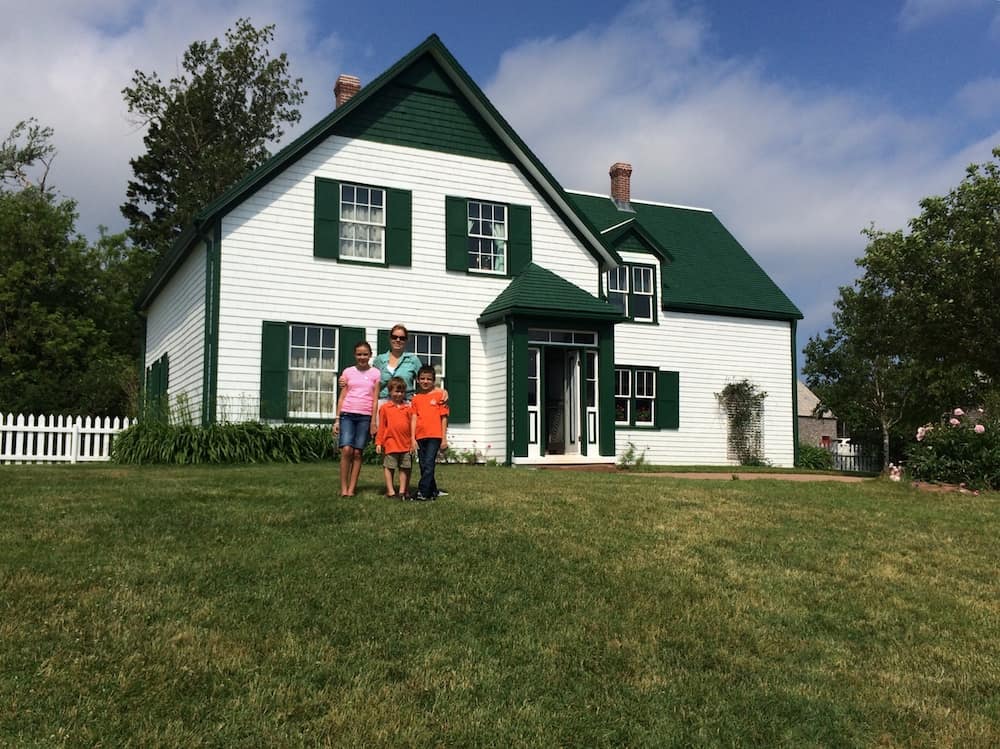
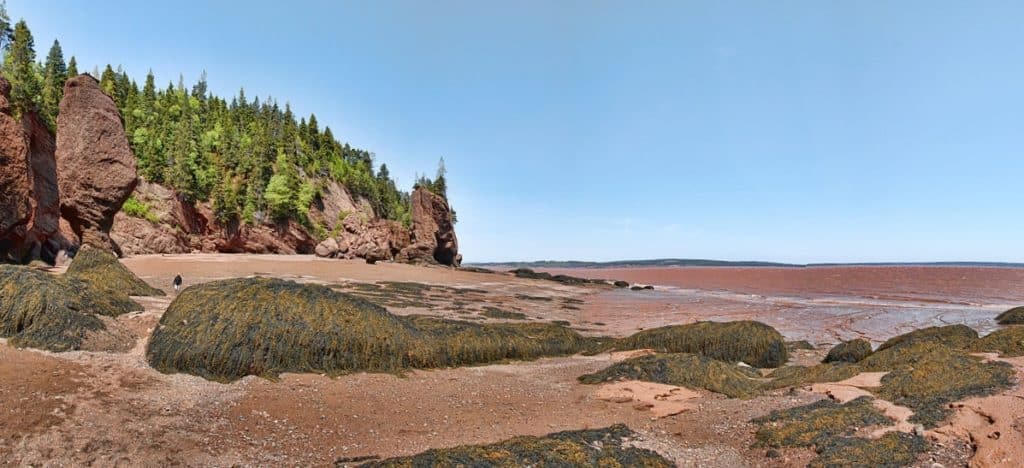
Comments are closed.